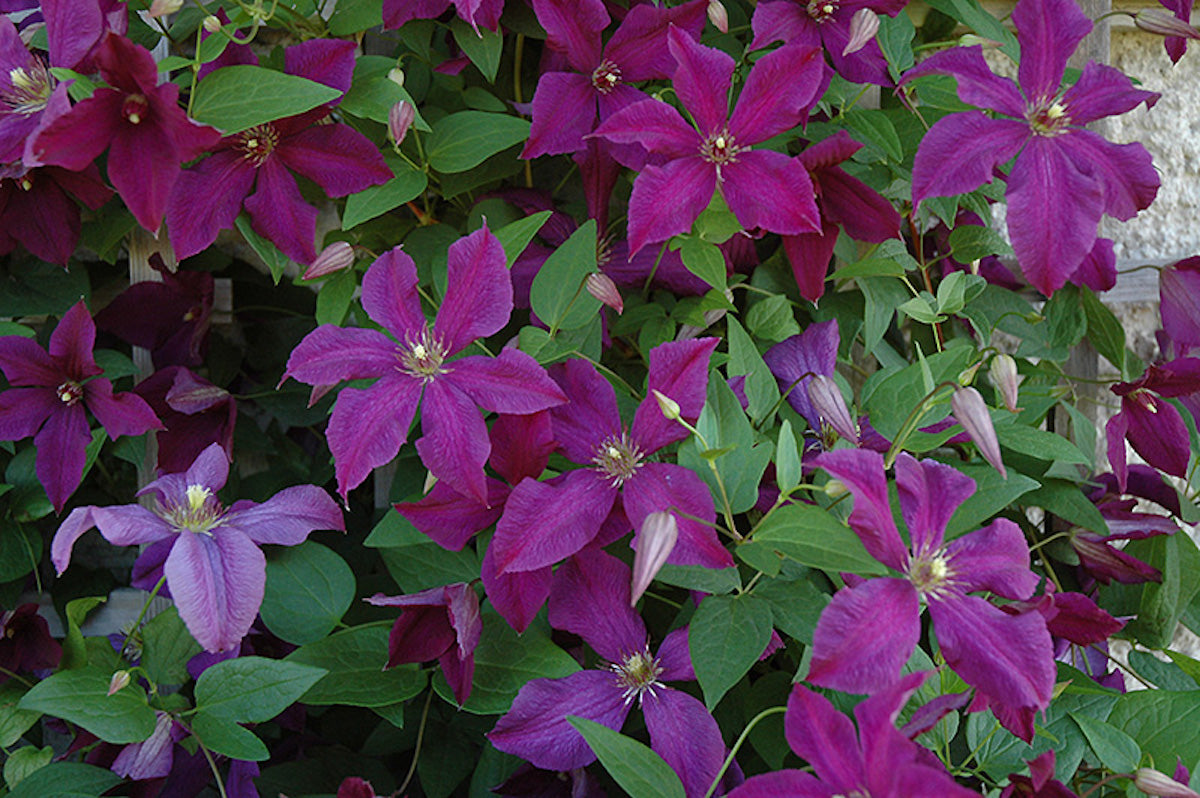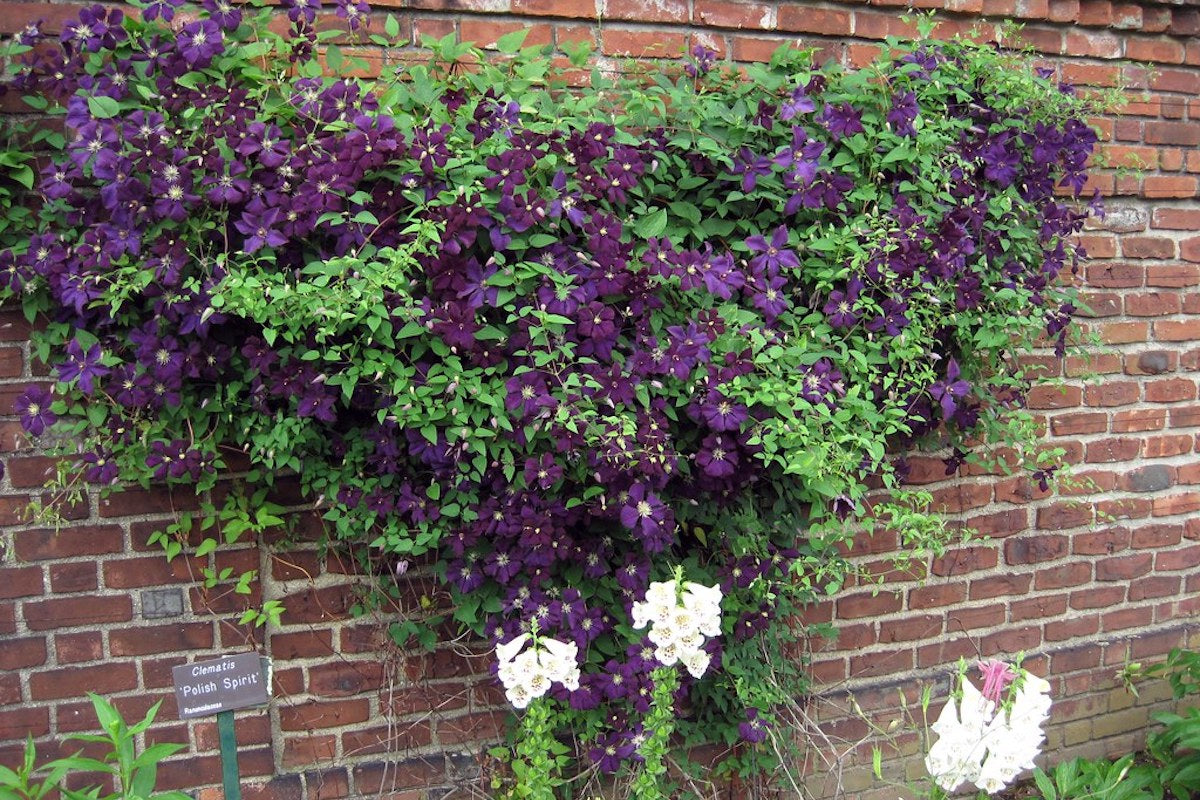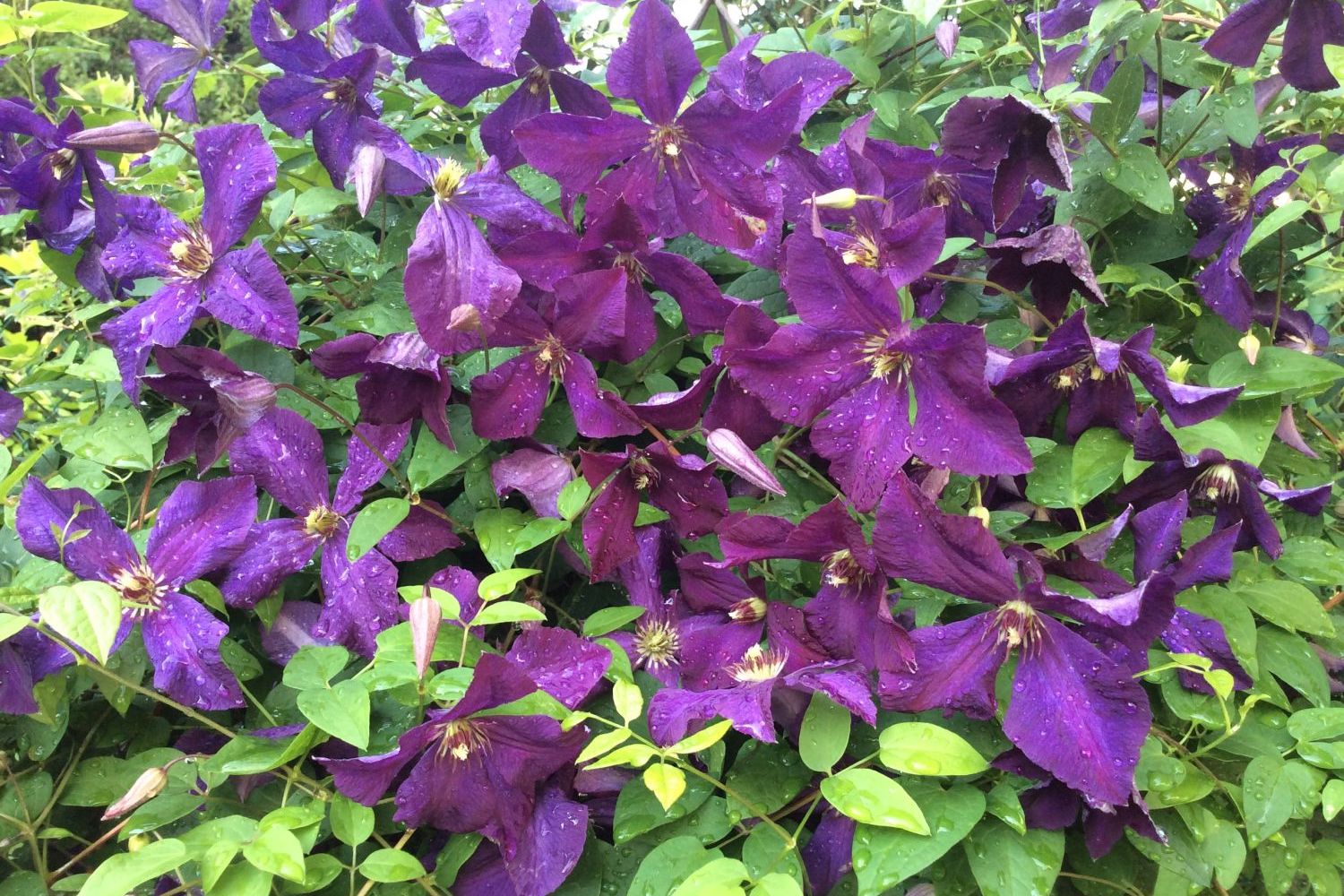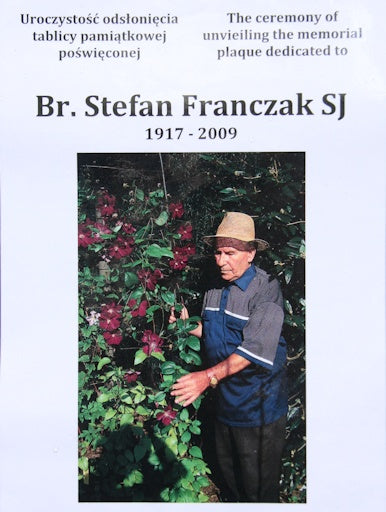Clematis 'Polish Spirit' (LL)
Approx. 0.5 litre pot
About this cultivar:
Clematis 'Polish Spirit' (LL) is a medium-sized deciduous climber with pinnate leaves. Flowers from mid-summer to late autumn. Want to know more? Gather round children......and let me tell you a story passed on to me from The International Clematis Society:
"Brother Stefan Franczak is a Jesuit monk who has been gardening in a Warsaw monastery since 1960. He is well known now for his many fabulous introductions. However, while Poland was under the control of the Soviet Union, little was known of Brother Stefan's creations. In the summer of 1984, Raymond Evison of The Guernsey Clematis Nursery Ltd. while visiting in Warsaw was taken to Brother Stefan's garden. Evison noticed a seedling plant growing on a fence. Even though it was quite floriferous, Brother Stefan foresaw no commercial value. He preferred large flowered cultivars. Evison however recognized the potential in this little beauty. Brother Stefan generously gave him a plant to develop. Evison introduced it as C. 'Polish Spirit' to the world in 1990. Evison states that with Brother Stefan's agreement he named it Polish Spirit. During his 1984 visit to Poland he became so impressed by the spirit of the Polish people. After the many difficulties they had been through since the last war and what they were achieving in their lives - that's Polish spirit.
In only three years after its introduction, C. 'Polish Spirit' was given the RHS Award of Garden Merit in 1993. It is currently on the International Clematis Society 'Clematis for Beginners List' under Late Large-Flowered clematis. Since the exact parentage of C. 'Polish Spirit' is unknown, there has been much speculation as to whether it belongs to the viticellas or the Jackmanii group. In fact John Howells, the esteemed clematarian, has given C. 'Polish Spirit' the honor of being featured in his book 'Trouble Free Clematis The Viticellas'. The equally knowledgeable Victoria Mathews classifies it in the Late Large-flowered group. Regardless of its classification, Raymond Evison clearly states, "It proved to be a very good commercial clematis and is now widely grown around the world."
We should all thank Brother Stefan for his creations. He passed in 2009.
- Position: Full sun, partial shade
- Soil: Almost any soil, grows well in Ballyrobert
- Flowers: July, August, September
- Other features: Grows well in Ballyrobert, Royal Horticultural Society Award of Garden Merit (RHS AGM)
- Hardiness: H6 - Hardy in all of UK and northern Europe (-20 to -15°C), Fully hardy - grows well in Ballyrobert!
- Habit: Climbing
- Foliage: Deciduous
- Height: 150 - 400 cm (5 - 13 ft)
- Spread: 75 - 200 cm (2.5 - 6.5 ft)
- Time to full growth: 2 to 5 years
- Plant type: Herbaceous Perennial, climber
- Colour: Purple, green
-
Goes well with: Drainpipes, roses, trees, walls, anything they can climb; even other clematis
About this genus:
Clematis, is one of our favorite genus. But not just ours. William Robinson (1838-1935) said about them ‘As hardy as the British Oak…I believe them to be the finest of all hardy flowers and wish them a pleasant time with their admirers.’ Christopher Lloyd (1921-2006) even started a specialty Clematis nursery within his famous garden at Great Dixter.
Clematis (meaning"a climbing plant" in ancient Greek) is a genus of about 300 species within the buttercup family (Ranunculaceae). Their garden hybrids have been popular among gardeners, beginning with Clematis × jackmanii, a garden standby since 1862. Most species are known as clematis in English, while some are also known as traveller's joy, (a name invented for the sole British native, C. vitalba, by the herbalist John Gerard), virgin's bower, old man's beard, leather flower or vase vine.
Clematis are mainly found throughout the temperate regions of the Northern Hemisphere, rarely in the tropics. The wild Clematis species native to China made their way into Japanese gardens by the 17th century. Japanese garden selections were the first exotic clematises to reach European gardens, in the 18th century.
The climbing varieties are valued for their ability to scramble up walls, fences, and other structures, and also to grow through other plants, such as shrubs and trees. Some can be trained along the ground to provide cover. Because of their adaptability and masses of spectacular flowers, clematis are among the most popular of all garden plants. Because different cultivars flower during different seasons it is, in theory, possible to have a clematis in flower at any time throughout the year.
They will grow in almost any garden soils and situations, many can be grown in containers. They are a great plant for any garden - don't believe they are for informal gardens only. We grow them almost everywhere in Ballyrobert. Try them with drainpipes, shrubs, roses, trees, anything they can climb;even other clematis.
Much confusion surrounds Clematis pruning. We say - don't worry. As mentioned above, Christopher Lloyd had a specialty Clematis nursery. Here is a I-think-relevant 1969 quote of his "[The] gardener’s eternally repeated question “When should I?” and “What’s the best time to?”, I've concluded that nine times out of ten the answer is “When you’re thinking about it; when you’re in the mood.”" Amen to that.








